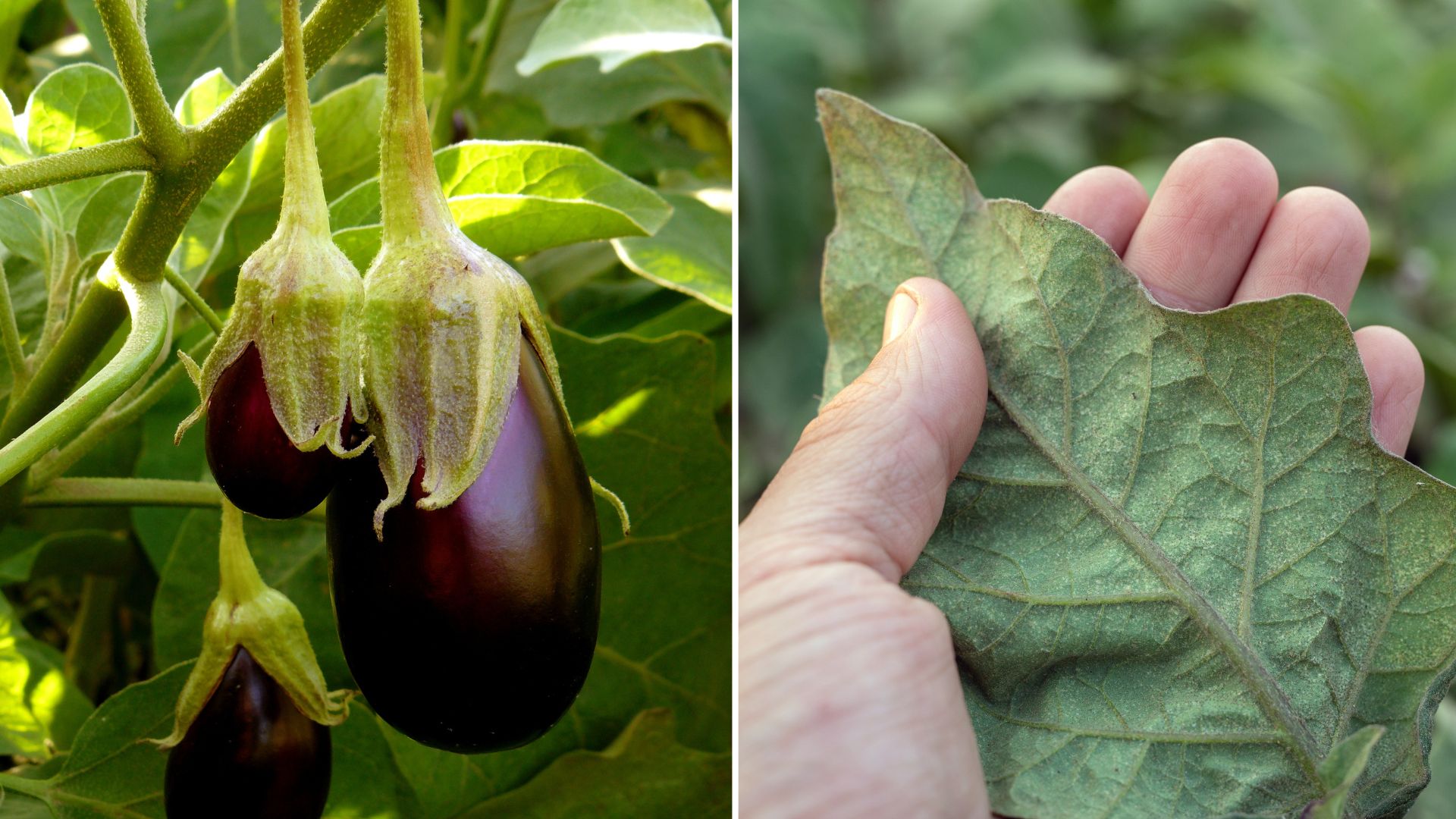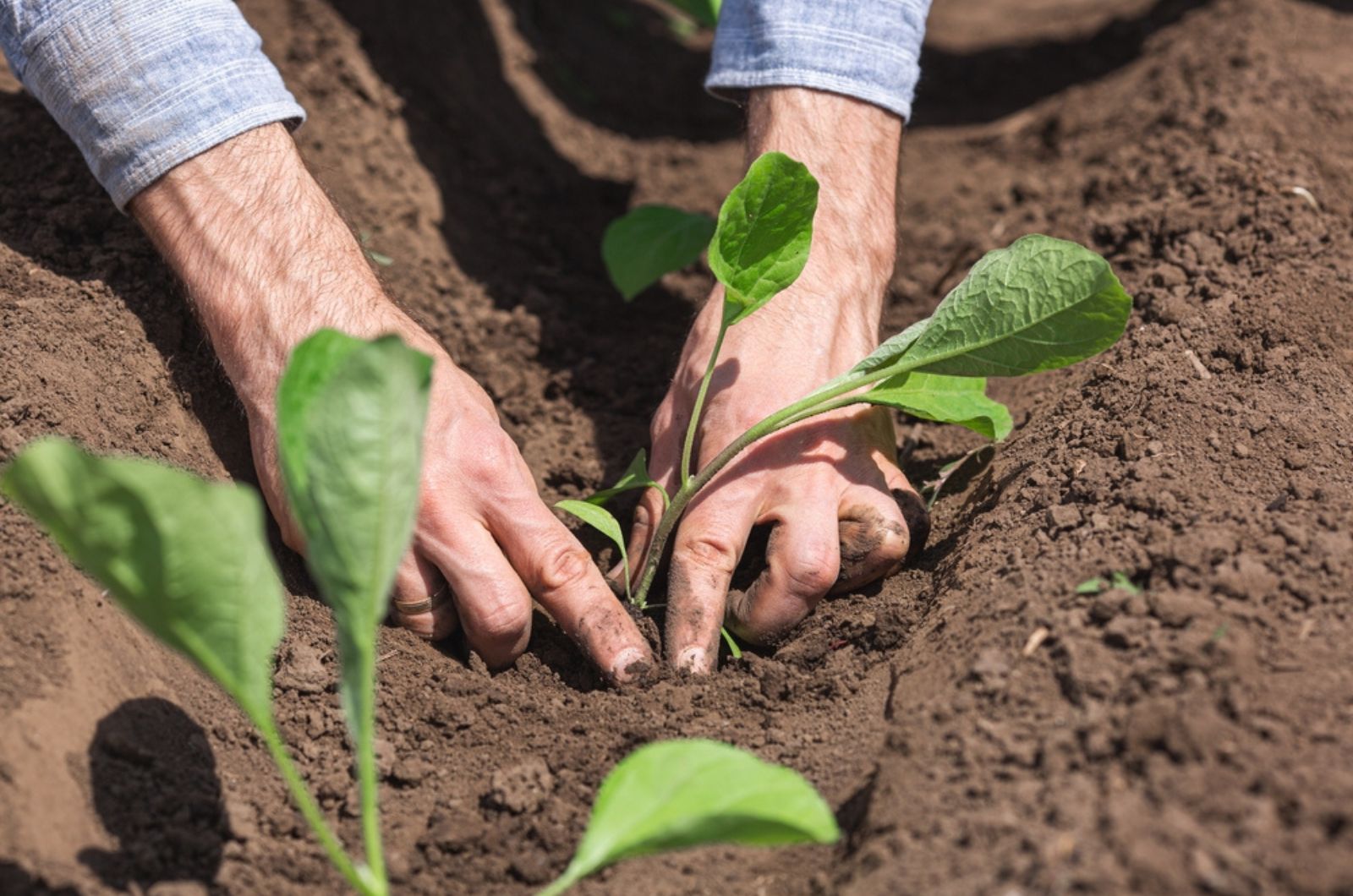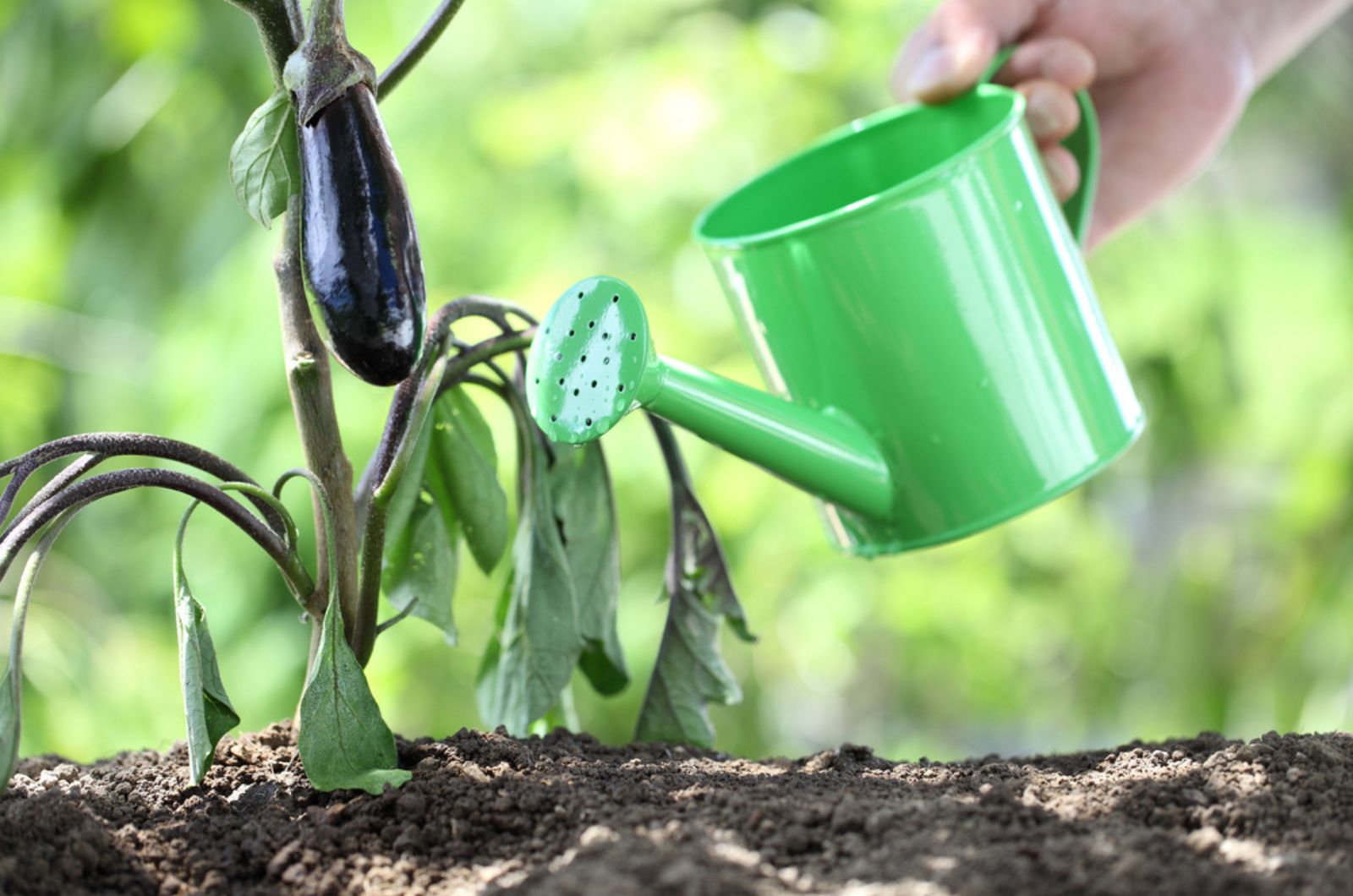Eggplant is one of those veggies that isn’t so easy to grow – improper planting, bad watering habits, plant diseases, and pest infestations are just some of the things that can affect your eggplants.
Luckily, we are here to save the day!
In this article, we are going to cover the most common eggplant growing mistakes, and also how to avoid them. So, let’s start our eggplant-growing journey together!
1. Inadequate Temperature
Eggplants are exotic vegetables that thrive in warmer temperatures. For starters, seeds need about 60 to 70 degrees Fahrenheit in order to germinate properly. Afterwards, eggplants thrive in temperatures of around 68 degrees Fahrenheit.
Any exposure to cold or frost can stunt their growth and cause damage. If you live in USDA zones 4 through 11, you don’t have to worry about anything because these regions are perfect for all eggplant growing stages.
While their tops must be kept in sunshine, their bases should be kept moist. You might think that they can also grow in dry soil, but that’s not the case usually. You should keep the soil moist by consistently watering and adding a layer of mulch.
Mulch is great because it also suppresses weed growth and maintains a steady soil temperature. You might also consider using row covers or cloths during cooler periods to shield them from cold snaps.
Lower temperatures don’t sit well with eggplants, but too high temperatures are not great either – we are talking about temperatures around 90 degrees Fahrenheit. These temperatures can cause heat stroke and hinder plant growth.
If you live in rather warmer climates, you should opt for heat-tolerant eggplants such as ‘Orient Express, ‘Millionaire’, or ‘Rhapsody’.
2. Bad Planting Time And Location
Planting eggplants at the wrong time or in unsuitable locations can impact their growth. Since they are long-season crops, it can be difficult to determine when is the best time to plant them.
It’s essential to plant them after the last frost date in your area when the soil has warmed up adequately.
You can plant them in a protected spot or cover them with low polytunnel during February or March – this way, you will get the most out of the season and your eggplants will be protected. You can also use a heated propagator that aids with seed germination.
You can also start growing this veggie in a container and then move it outside once the temperature has risen. Don’t plant too many seedlings close to one another because you will end up with overcrowded eggplants that can’t develop properly.
When planting, make sure that your soil is well-draining and fertile – you can add aged compost to it. Eggplants thrive in soils with pH levels between 6.0 and 6.5. Avoid planting eggplants in areas that are prone to waterlogging or heavy shade.
3. Pests And Diseases
Unfortunately, eggplants are one of those sensitive veggies that are susceptible to various pests and diseases. The most common ones are aphids, spider mites, white flies, and fungal infections.
Monitor your plants regularly for any signs of infestation or disease and take appropriate measures to fix these issues. For instance, if you spot any webbing on the foliage, you are probably dealing with spider mites.
These are easily removed with diluted soap or organic sprays. Sticky honeydew on the leaves is a sign of aphid infestation. Treat these with neem oil or organic sprays. You can also introduce ladybugs to the garden because they prey on aphids.
If you notice wilting and yellow patches on the leaves, then you are probably dealing with fusarium wilt. Leaf curl is usually a sign of mosaic virus infection.
For plant diseases, it’s best to prevent them – well-draining soil is a must, as is removing weeds and rotating the crops. Botrytis is prevented by removing old flower petals.
In case you haven’t had any luck with them previously, consider planting disease-resistant eggplants such as ‘Naida’, ‘Black Beauty, and ‘Epic’.
Remember to space them correctly and provide them with good airflow.
For more information, check out this video: Distance between eggplant plants
4. Eggplants Need Support
Strangely, not providing eggplants with any type of support is one of the biggest growing mistakes. Most gardeners get so preoccupied with getting the soil right and worrying about temperature that they forget to stake their eggplants!
Plants need support before fruiting, no matter if you grow them in borders, raised beds, or large containers. You can use stakes, garden trellises, cages, bamboo canes, or poles to provide your eggplants with adequate support.
You have to ensure that the stakes are sunk about an inch or two from the base of the plant. Pinching out plant tips when they reach a height of one foot will also improve the plant’s structure, encourage a bushier, more sturdy plant, and aid in fruit production
5. Incorrect Watering And Fertilization
According to the United States Department of Agriculture, eggplants are composed of 92.7% water. This means that the key to robust eggplants lies in watering correctly.
If eggplants don’t receive enough water, they won’t produce flowers or develop fruit!
Generally speaking, eggplants need about an inch of thorough watering per week. Watering sessions should be even more frequent once the plant starts fruiting, and during hot and dry spells.
Either use a soaker hose or drip irrigation when watering so that the water can reach the deep roots underneath. Reduce watering in August so that the fruit can ripen properly. They also like humidity so you might consider misting the flowers twice a day to help the fruit set.
Additionally, not feeding eggplants adequately can lead to fewer fruits. Begin fertilizing early – use diluted all-purpose fertilizer after planting. Once you notice that the fruits have started developing, use high-potash liquid fertilizer instead.
If you don’t want to use these kinds of fertilizers, try making one on your own. Simply add a little water to a bucket of comfrey leaves; put a brick to weigh them down, and dilute it until the color is pale brown.
For more information, please check: How To Make Homemade Fertilizer For Your Plants
6. Harvesting Mistakes
The last eggplant growing mistake is incorrect harvesting. First of all, you can harvest them at the wrong time. Harvesting eggplants at the right time is crucial if you want to enjoy their best flavor and texture. Waiting too long to harvest can lead to overripe or bitter fruit.
The best thing to do is wait until they reach full size, have a glossy appearance, and feel firm to the touch. Most eggplants can be harvested 12 to 15 weeks after planting, although this depends on the variety.
If you want early-maturing eggplants, consider growing cultivars such as ‘Galine’, ‘Early Long Purple’, or ‘Early Midnight’.
Additionally, tapping traditional rotund breeds is an intriguing method of examining them – a thud denotes fruit that is firm and sensitive; a softer, woody sound may indicate overripe fruit.
You can also check by pressing them with your finger. The fruit is ready if you press your finger into the peel and wait for it to spring back. It needs a little more time if it immediately springs back. It is overripe if it leaves a deep groove.
Never pull your eggplants and always use a sharp knife or pruning shears to cut the fruit from the plant, leaving a short stem attached.



